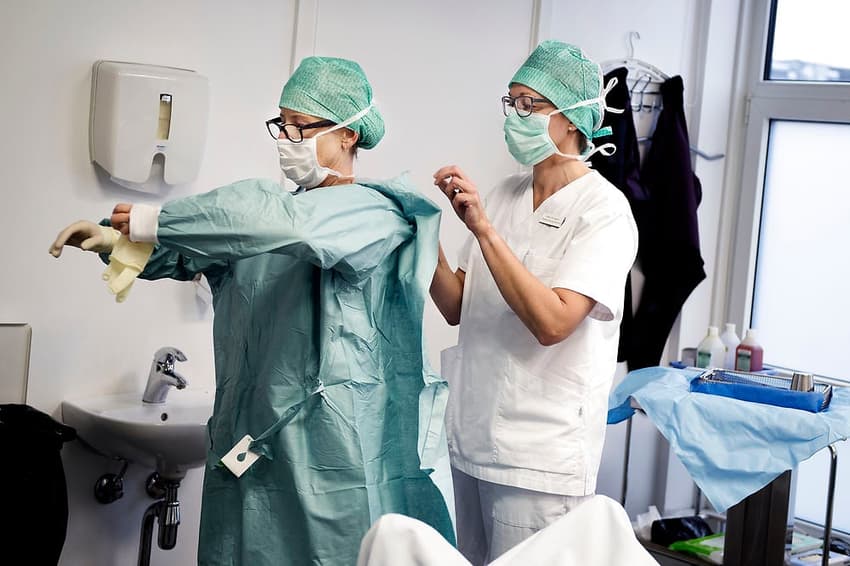Over 2,000 of Denmark’s doctors are foreign professionals

Almost one in five doctors in rural parts of Denmark was trained abroad. The Danish Medical Association has called for more stringent language requirements.
Statistics Denmark (DST) figures show an increase in the number of doctors working in Denmark who qualified abroad, newspaper Jyllands-Posten reported on Friday.
A total of 2,100 foreign-trained doctors working at Danish hospitals and general practices in 2017 represents an increase of 300, or 19 percent, since 2010.
The Danish Medical Association’s chairperson Andreas Rudkjøbing said the figures show the Danish health sector’s increasing need to recruit specialist medics.
“This reflects that it has not been possible to meet our needs with (Danish)-trained doctors, which has thereby made it necessary to fill vacancies with foreign-trained doctors. The Danish health system is completely dependent upon our foreign colleagues,” Rudkjøbing told Jyllands-Posten.
According to the DST analysis, 18 percent of hospital doctors and GPs in rural municipalities were foreign nationals who took their qualifications outside of Denmark. The national average was somewhat lower at 9 percent.
Rudkjøbing said the key consideration is quality of service, rather than the proportion of foreign doctors.
“The gauge is delivery of high quality treatment and high patient safety,” he said.
The most common nationality for the foreign-trained doctors is German (247 doctors) followed by Polish (219), then Iraqi (163), Lithuanian (156) and Russian (109).
The top 10 includes three non-European countries: Afghanistan and Iran in addition to Iraq. Hungary, Romania and Norway complete the top ten.
Current rules require doctors trained outside of Nordic countries and the EU to pass a series of courses in order to be granted authorization to practice medicine in Denmark. These include Danish language tests as well as tests relating to medical knowledge and Danish medical law.
Doctors who studied in the EU or the Nordic region are exempted from these courses and are able to gain authorization largely automatically under EU law, the Danish Patient Safety Authority states on its website.
That means individual employers – the health authorities known as Regions, in the case of public hospitals – are responsible for assessing the linguistic skills of medics before hiring them.
Rudkjøbing told Jyllands-Posten he is in favour of Danish language tests also applying to EU-trained doctors.
“You can end up in a situation in which a doctor is employed without having the necessary linguistic competencies to carry out the role. We have asked the minister for health, and parliament, to tighten the rules so we don’t end in such a situation,” he said.
The Social Democrats, Danish People’s Party and Red Green Alliance – who each represent different parts of the political spectrum – all said prior to June’s general election that they would support such a measure.
READ ALSO: Foreign doctors must meet Danish language standards: minister
Comments
See Also
Statistics Denmark (DST) figures show an increase in the number of doctors working in Denmark who qualified abroad, newspaper Jyllands-Posten reported on Friday.
A total of 2,100 foreign-trained doctors working at Danish hospitals and general practices in 2017 represents an increase of 300, or 19 percent, since 2010.
The Danish Medical Association’s chairperson Andreas Rudkjøbing said the figures show the Danish health sector’s increasing need to recruit specialist medics.
“This reflects that it has not been possible to meet our needs with (Danish)-trained doctors, which has thereby made it necessary to fill vacancies with foreign-trained doctors. The Danish health system is completely dependent upon our foreign colleagues,” Rudkjøbing told Jyllands-Posten.
According to the DST analysis, 18 percent of hospital doctors and GPs in rural municipalities were foreign nationals who took their qualifications outside of Denmark. The national average was somewhat lower at 9 percent.
Rudkjøbing said the key consideration is quality of service, rather than the proportion of foreign doctors.
“The gauge is delivery of high quality treatment and high patient safety,” he said.
The most common nationality for the foreign-trained doctors is German (247 doctors) followed by Polish (219), then Iraqi (163), Lithuanian (156) and Russian (109).
The top 10 includes three non-European countries: Afghanistan and Iran in addition to Iraq. Hungary, Romania and Norway complete the top ten.
Current rules require doctors trained outside of Nordic countries and the EU to pass a series of courses in order to be granted authorization to practice medicine in Denmark. These include Danish language tests as well as tests relating to medical knowledge and Danish medical law.
Doctors who studied in the EU or the Nordic region are exempted from these courses and are able to gain authorization largely automatically under EU law, the Danish Patient Safety Authority states on its website.
That means individual employers – the health authorities known as Regions, in the case of public hospitals – are responsible for assessing the linguistic skills of medics before hiring them.
Rudkjøbing told Jyllands-Posten he is in favour of Danish language tests also applying to EU-trained doctors.
“You can end up in a situation in which a doctor is employed without having the necessary linguistic competencies to carry out the role. We have asked the minister for health, and parliament, to tighten the rules so we don’t end in such a situation,” he said.
The Social Democrats, Danish People’s Party and Red Green Alliance – who each represent different parts of the political spectrum – all said prior to June’s general election that they would support such a measure.
READ ALSO: Foreign doctors must meet Danish language standards: minister
Join the conversation in our comments section below. Share your own views and experience and if you have a question or suggestion for our journalists then email us at [email protected].
Please keep comments civil, constructive and on topic – and make sure to read our terms of use before getting involved.
Please log in here to leave a comment.